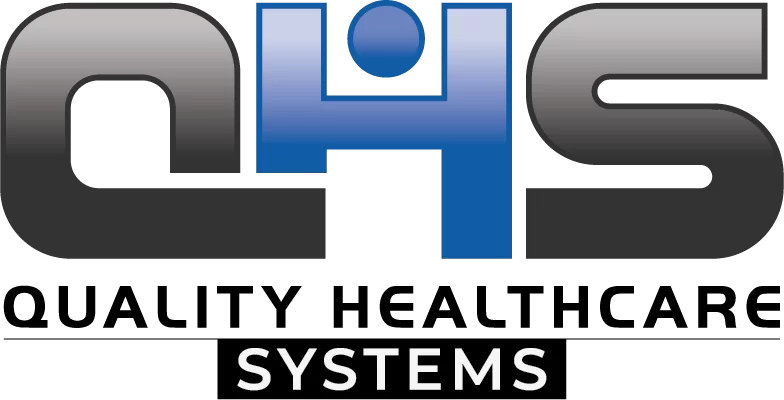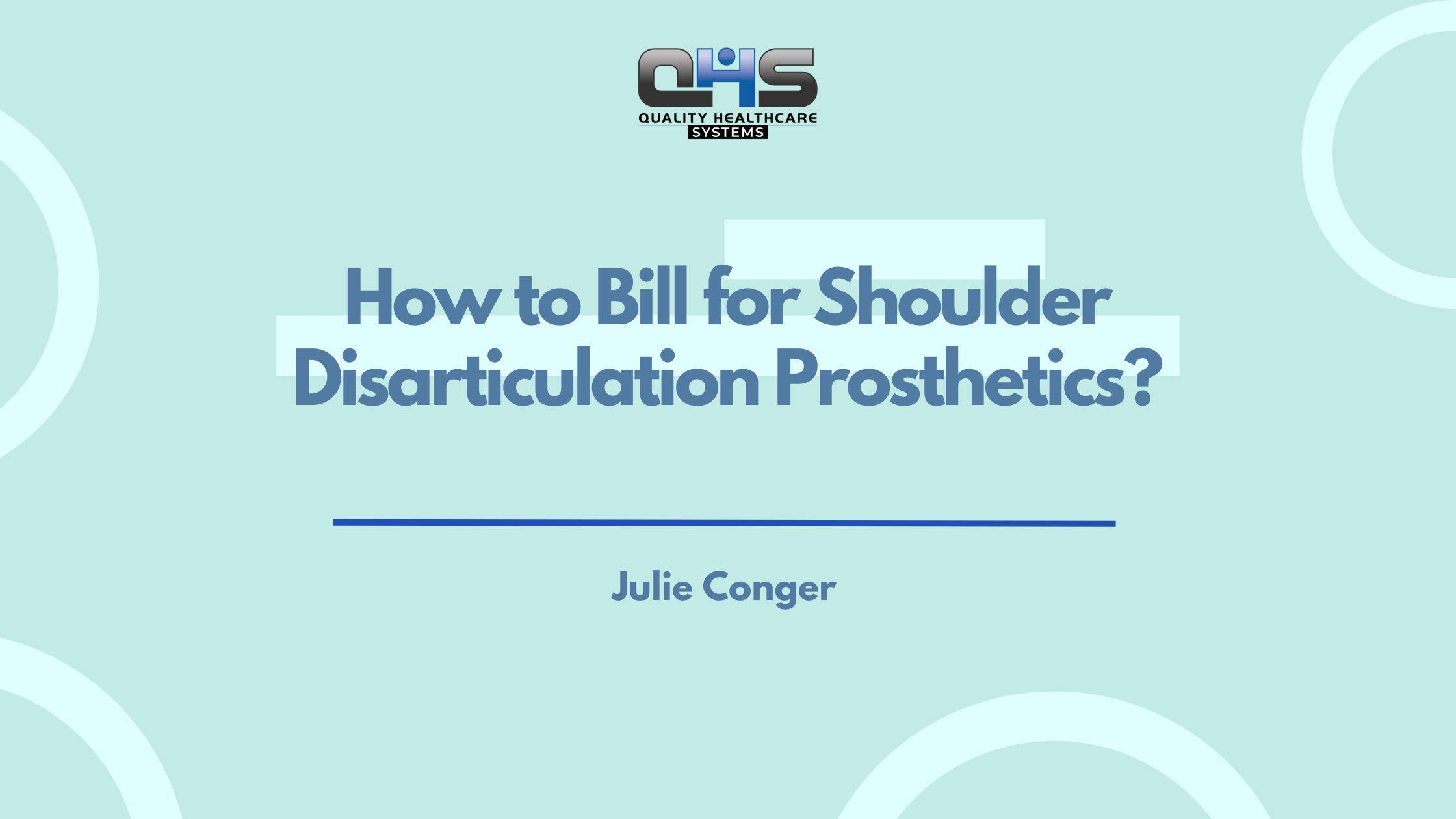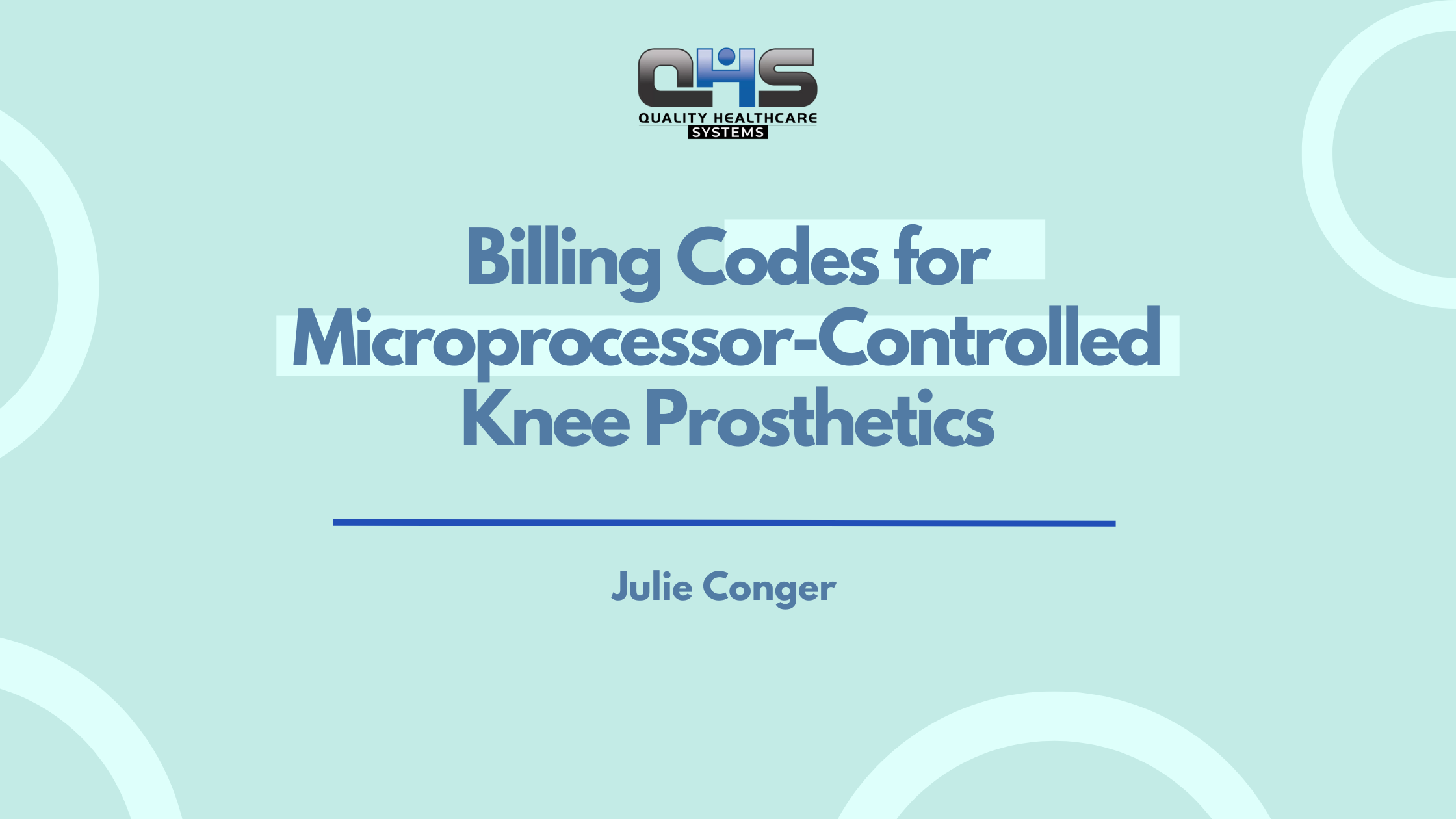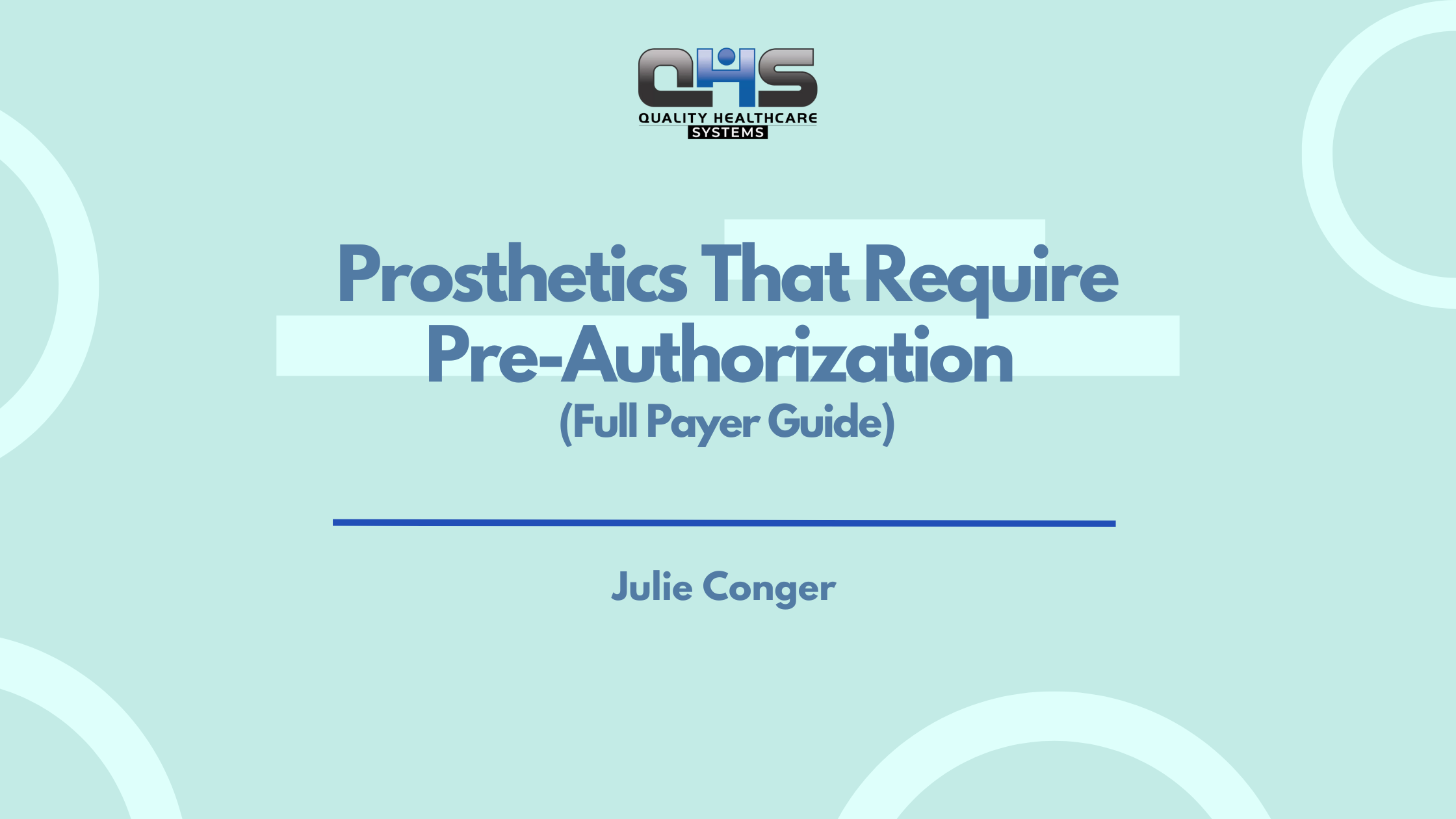Billing for shoulder disarticulation prosthetics is one of the most intricate areas of DMEPOS (Durable Medical Equipment, Prosthetics, Orthotics, and Supplies) reimbursement. These custom-fabricated, high-cost devices account for less than 4% of upper-limb amputations but demand the most rigorous documentation, accurate coding, and payer-specific compliance to secure reimbursement.
As scrutiny from Medicare and commercial insurers increases, providers must navigate every step of the billing workflow, starting from ICD-10 diagnosis coding and HCPCS L-codes, to prior authorization requirements and detailed supporting documentation.
What Is a Shoulder Disarticulation Prosthesis?
A shoulder disarticulation prosthesis is a custom-built artificial limb for individuals who have lost their entire arm at the shoulder joint, including the humerus. This type of amputation may occur due to traumatic injury, cancer (such as osteosarcoma), or congenital limb differences.
The prosthesis usually includes a torso-supporting socket, a mechanical or powered shoulder joint, an upper arm segment, an optional elbow joint, and a terminal device like a hook or myoelectric hand. These prostheses can be body-powered, myoelectric, or hybrid systems, selected based on the user’s functional goals, physical condition, and insurance coverage.
When Is It Prescribed?
Shoulder disarticulation prostheses are prescribed in cases of:
-
Oncologic conditions such as osteosarcoma or soft tissue sarcomas
-
Severe trauma, including crush injuries or combat-related amputations
-
Congenital absence or limb deformities present from birth
Due to the complete loss of upper-limb musculature and skeletal support, patients require prosthetics that provide both cosmetic restoration and functional aid, depending on their goals and insurance coverage.
Types of Shoulder Disarticulation Prosthetic Systems
There are three primary prosthetic system types, selected based on the patient’s functional goals and prosthetist evaluation:
-
Body-Powered Prosthetics
Use a harness and cable system controlled by shoulder or chest movement to operate the terminal device (hook or hand). These are generally more durable but require physical effort. -
Myoelectric Prosthetics
Powered by electrical signals generated by muscle contractions in the chest, back, or residual limb. These offer improved dexterity and cosmetic appearance but are more expensive and require battery power. -
Hybrid Prosthetics
Combine body-powered and myoelectric components, often used when partial control over the terminal device is desired along with reduced weight or cost.
K-Levels and Functional Classification
Functional capability is classified using Medicare K-levels, which significantly influence coverage decisions:
| K-Level | Description | Billing Relevance |
|---|---|---|
| K0 | No ability to ambulate or transfer safely | Not eligible for prosthetics |
| K1 | Limited mobility (e.g., household ambulation) | Basic prosthetics only |
| K2 | Limited community ambulation | May qualify for basic myoelectric |
| K3 | Community ambulator with variable cadence | Eligible for advanced and custom prosthetics |
| K4 | High-activity level, typically athletes or children | Coverage for top-tier or experimental tech |
Note: K-level documentation from the prosthetist and referring physician is required to justify advanced componentry like myoelectric arms or microprocessor-controlled shoulder joints.
HCPCS L-Codes for Shoulder Disarticulation Prosthetic Components
HCPCS Level II codes, especially L-codes, are essential for billing each prosthetic component. For shoulder disarticulation prosthetics, providers must itemize every functional piece — from the socket to the terminal device — using accurate codes and required modifiers.
Commonly Used L-Codes for Shoulder Disarticulation Prostheses
💡 Tip: Always pair each L-code with the correct modifier (e.g., RT, LT, NU) and ensure medical necessity is documented for every listed component.
| Component | HCPCS L-Code | Description |
|---|---|---|
| Socket | L6621 | Custom molded socket for shoulder disarticulation |
| Shoulder Joint | L7259 | Mechanical shoulder joint, including abduction control |
| Control System | L6680 | Harness with cable control for shoulder unit |
| Terminal Device | L6722 | Myoelectric hand or hook |
| Battery System | L7260 | Rechargeable battery system for powered prosthesis |
| Elbow Unit (optional) | L6611 | Modular elbow component for enhanced function |
| Suspension Harness | L6677 | Shoulder harness system with adjustable suspension |
Services Quality Healthcare Systems Provides:
A/R Management | Revenue Cycle Management | Provider Credentialing
Modifiers That May Apply
| Modifier | Meaning |
|---|---|
| RT / LT | Right or Left side of body |
| NU | New equipment (non-rental) |
| RR | Rental equipment (if allowed) |
| KX | Documentation on file supports medical necessity |
| GA | Waiver of liability on file (used when claim may be denied) |
Bundling Consideration:
Some carriers may bundle L-codes if components are considered standard. Unbundling is permitted when the documentation justifies the use of distinct custom elements (e.g., unique socket design + microprocessor terminal device).
⚠️ Always check payer-specific bundling rules in the DME MAC LCDs or with commercial payer portals.
4. ICD-10 Codes Supporting Medical Necessity for Shoulder Disarticulation Prosthetics
To justify payment for a shoulder disarticulation prosthesis, the claim must include appropriate ICD-10-CM diagnosis codes that support medical necessity. These diagnosis codes establish the clinical rationale for the use of each HCPCS L-code submitted.
Common ICD-10 Codes for Shoulder-Level Amputation
| ICD-10 Code | Description |
|---|---|
| Z89.411 | Acquired absence of right shoulder |
| Z89.421 | Acquired absence of left shoulder |
| S48.111A | Complete traumatic amputation of right shoulder and upper arm, initial encounter |
| S48.112A | Complete traumatic amputation of left shoulder and upper arm, initial encounter |
| Q71.01 | Congenital absence of upper limb, unilateral |
| C40.01 | Malignant neoplasm of the scapula and long bones of the upper limb |
🧠 Always align laterality (right or left) between ICD-10 and HCPCS modifiers (e.g., Z89.411 with L-codes + RT modifier).
Coding Tip: Link Diagnosis to Procedure
Medicare requires that each billed L-code be supported by a related diagnosis. For example, a claim including L7259 (mechanical shoulder joint) must show the absence of the shoulder and evidence of limb loss or congenital deficiency in documentation.
Include Secondary ICD-10 Codes If Applicable
Sometimes, additional codes help clarify the patient’s condition:
-
T87.89XA – Complication of amputation stump
-
Z44.001 – Encounter for fitting and adjustment of external prosthetic device, right upper limb
⚠️ Avoid using only generic codes like Z44.0 or Z89.0. Be specific and support all L-codes with accurate diagnostic coding.
Documentation & Prosthetic Evaluation Requirements
Proper documentation is critical for billing shoulder disarticulation prosthetics. Claims lacking functional assessments, clinical justification, or a face-to-face evaluation are at high risk of denial, especially for advanced or custom-fabricated systems.
Required Medical Documentation Components
| Documentation | Who Provides It | Purpose |
|---|---|---|
| Face-to-Face Evaluation | Referring physician | Confirms medical necessity and amputation level |
| Detailed Written Order (DWO) | Physician | Lists prescribed prosthetic components |
| Prosthetic Evaluation | Licensed prosthetist | Measures residual limb, functional level, and recommends design |
| K-Level Functional Assessment | Prosthetist or physician | Determines patient’s functional ability (K1–K4) |
| Proof of Custom Fabrication Need | Prosthetist | Explains why off-the-shelf is insufficient |
CMS Guidelines: Supporting Documentation Must Include
-
Description of the patient’s medical condition and physical status
-
Functional goals for using the prosthesis (e.g., basic ADLs, work reintegration)
-
Specific L-codes requested and how each addresses the patient’s needs
-
Statement justifying custom fabrication (if billed)
Documentation Must Match Billed Codes
Mismatch between L-code detail and documentation (e.g., billing L6621 without noting a custom socket design) can lead to denials or audits.
When Is Prior Authorization Required for Shoulder Disarticulation Prosthetics?
Most high-cost shoulder disarticulation prosthetics require prior authorization under Medicare, Medicaid, and commercial insurance plans.
Prior authorization is often mandatory due to the elevated cost and custom fabrication of shoulder disarticulation prostheses. CMS mandates pre-approval for several L-codes categorized under custom-fabricated upper-limb prosthetics.
Medicare’s prior auth program under the DMEPOS PA Demonstration includes shoulder-level prosthetic components when billed with specific HCPCS codes. These include powered joints, custom sockets, and advanced terminal devices.
Private payers and Medicaid programs have their own guidelines and portals for submitting prior authorization. Key documents typically include:
-
Detailed physician notes supporting amputation level
-
Functional level evaluation (K-level)
-
Prosthetist’s assessment with justification for components
Missing or incorrect documentation is a leading cause of denials. Ensure that the diagnosis and functional evidence clearly support each requested code.
Billing Rules, Frequency Limits, and the Appeals Process
Accurate billing for shoulder disarticulation prosthetics depends on proper use of modifiers, understanding bundling rules, and appealing denied claims with full documentation.
Insurers often bundle related prosthetic parts. For instance, a harness system or a suspension liner may be bundled into the base socket code. Improper unbundling can trigger denials or audits.
In addition, frequency limitations apply to many high-end parts, such as powered elbows or myoelectric hands. Medicare typically limits replacement to once every 3–5 years unless medical necessity can be re-established.
To ensure compliance:
-
Review bundling edits on the latest DMEPOS fee schedule
-
Use KX modifiers when requirements are met
-
Include RT/LT and NU/RR as needed per payer policy
-
Document functional level reassessments for replacements
If a claim is denied, initiate an appeal using a structured format. Submit the original claim, all documentation, and a narrative that connects clinical need to the denied code.
Well-prepared appeals often succeed when accompanied by:
-
A prosthetist’s clinical justification
-
Physician’s face-to-face visit note
-
Functional (K-level) evidence and supporting test results
Common Billing Errors to Avoid in Shoulder Disarticulation Prosthetics
Billing mistakes can delay payments or trigger audits. Avoiding common errors ensures faster claim approvals and fewer denials.
Diagnosis and Procedure Mismatch
Don’t use diagnosis codes that conflict with billed L-codes. For example, Z89.421 (acquired absence of right shoulder) should not be paired with L-codes for a left-side prosthetic. Always align laterality in both the diagnosis and procedure.
Missing or Outdated Functional Evaluation
A K-level assessment must be current and included in your documentation. Without it, Medicare or private insurers may deny high-end components like microprocessor-controlled prosthetics.
Inappropriate or Missing Modifiers
L-codes often require modifiers such as RT/LT for side-specific billing or NU to indicate new equipment. Missing these leads to rejections or underpayments.
Incomplete Prior Authorization Packets
Submitting a claim without a full documentation packet — including face-to-face notes, prosthetist evaluation, K-levels, and physician order — will almost always result in delays or denials. Use the CMS checklist to ensure completeness.
Best Shoulder Disarticulation Prosthetic Billing in North Carolina
Quality Healthcare Systems (QHS) offers specialized billing services for Shoulder Disarticulation prosthetics in North Carolina, with a focus on shoulder disarticulation cases. Our deep domain expertise, CMS-aligned workflows, and audit-ready documentation ensure faster approvals and fewer denials.
Decades of Specialized Experience
QHS has over 20 years of experience in upper-limb prosthetic billing — including myoelectric and hybrid systems — making us the preferred billing partner for shoulder disarticulation prosthetics. We routinely bill for components like L7259 (shoulder joint), L6611 (socket), and L6880 (electronic control systems) with correct modifier usage.
CMS-Compliant Billing Protocols
Every claim we process aligns with Centers for Medicare & Medicaid Services (CMS) documentation and coding standards. Our compliance-first process reduces audit risk and ensures your claims meet Medicare’s strictest criteria.
Intelligent Workflow Automation
We use proprietary billing software that flags missing documentation, automates prior authorization tracking, and provides real-time denial alerts. This speeds up approvals for high-cost components while reducing rework.
Audit-Proof Documentation Collaboration
QHS works closely with prosthetists and physicians to compile detailed, defensible documentation — including K-level assessments, face-to-face evaluations, and prosthetic component justifications — to support every claim.
Frequently Asked Questions
What HCPCS L-codes are used for shoulder disarticulation prosthetics?
A standard shoulder disarticulation prosthesis may include L-codes for the socket (L6611), terminal device (L6722), shoulder joint (L7259), and control mechanism (e.g., L6880 for electronic control). Specific codes depend on the components selected.
Does Medicare cover custom shoulder prosthetics?
Yes. Medicare covers custom prosthetics, including for shoulder disarticulation, when medical necessity is documented. The claim must meet DMEPOS coverage criteria, including physician notes, functional assessments (K-level), and justification for each component.
What documentation is required for high-cost prosthetics like myoelectric arms?
To support billing, include:
-
A face-to-face evaluation with the prescribing physician
-
A detailed prosthetist assessment
-
The patient’s K-level classification
-
Justification for each component (socket, controller, shoulder joint, terminal device)
Missing any of these can result in denials or audit flags.
How do I request prior authorization for a microprocessor-controlled shoulder prosthesis?
Submit prior authorization through your DME MAC portal. Required documentation includes:
-
All relevant L-codes and ICD-10 diagnosis codes
-
A functional level assessment (K-level)
-
Physician prescription
-
Justification for microprocessor technology based on the patient’s activity level and goals
What should I do if my claim is denied due to missing K-level documentation?
File an appeal that includes updated clinical documentation. Add a revised K-level assessment, physician notes, and if possible, video-supported gait or function assessments from the prosthetist to reinforce medical necessity.





